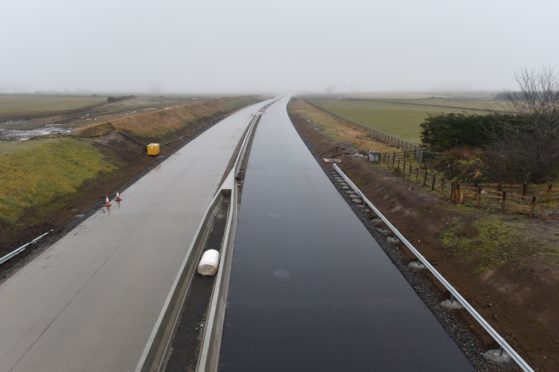Aberdeen council chiefs are planning for the city’s future – with the authority’s leader claiming the new Aberdeen bypass offers “huge opportunities”.
Early work has started on the new Local Development Plan for 2022.
And, in a “pre main-issues report”, seen by the P&J, areas around Dyce, Bridge of Don, Cove and Kingswells have been provisionally listed as “growth areas”.
Another page, under the heading ‘other issues’, lists the likes of “new city deal projects, hydrogen stations and new uses for surplus sites and buildings” as matters the council “needs to think about”.
Last night, council co-leader Jenny Laing said the £745million Aberdeen Western Peripheral Route, which is scheduled to open in the coming months, could help diversify the city’s economy away from oil and gas.
But the opposition SNP group responded it had concerns about the road becoming a “development corridor”.
Mrs Laing said: “The Aberdeen Western Peripheral Route offers huge opportunities for those interested in shaping the next Local Development Plan.
“If Aberdeen is to move away from being so reliant on oil and gas, we must shape our city for the future. We must meet the housing needs of the city, but we must also support business and development.
“As part of [last week’s] budget, I instructed the chief executive [Angela Scott] to work with the Scottish Government and Transport Scotland to bring forward a City Deal Two, so we can deliver road infrastructure that will attract sustainable jobs to Aberdeen.”
Liberal Democrat Martin Greig said: “There should be a heavy focus on protecting the natural environment.
“Residents deserve to live in good quality neighbourhoods where there is an emphasis on desirable features like access to parks and play areas.
“The city needs to take a long deep breath before committing to new build. Extremely careful consideration is needed because there have been mistakes in the local plan process in the past.
“The economic situation is not as strong as it was.”
SNP councillor John Cooke said: “I would be very concerned at any attempts to turn the AWPR into a development corridor.
“There is a clear need for more housing, but we need to support that in a sustainable way.”
